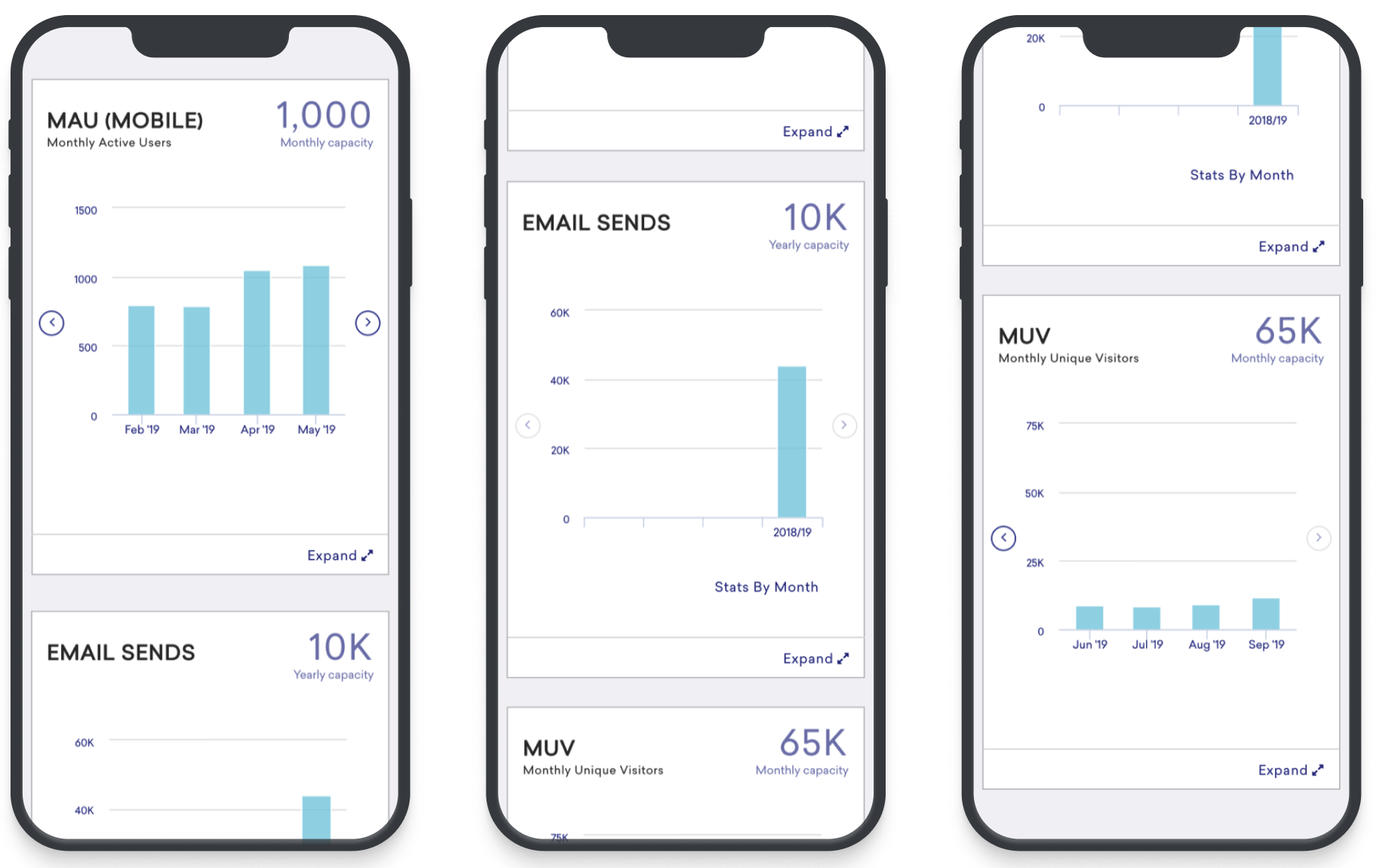Braze Subscription & Billing Analytics Tool
Project Overview
The goal for this feature improvement was to enhance the Subscription & Billing Analytics Tool to deliver customized insights tailored to each customer's subscription type and data usage. Initially, the Subscription & Billing Analytics Tool presented a standardized matrix of information, which often included data points irrelevant to individual users. This lack of personalized billing information made it challenging for Braze's customers to gauge their data consumption within their subscription model accurately.
Each Braze customer operates under a unique billing structure. With limits on the number of messages permitted within their contract term, exceeding these limits results in additional fees. The original tool failed to effectively communicate critical details. As a consequence, our Success Managers and Customer Support fielded a significant volume of calls from customers seeking clarity. Our own internal teams encountered difficulties interpreting the tool's data, often spending hours assisting customers in understanding their current data usage status.

My Role / Team
For this particular project, our Agile team was relatively small, yet we managed to deliver the feature swiftly within just two sprints. The feature update was deployed to our production environment on our bi-weekly sprint schedule. Our team comprised one Back-end developer, one Front-end developer, but lacked a dedicated Product Manager. Instead, we divided the Product Manager responsibilities between myself and a Back-end developer who possessed a deep understanding of Braze's API structure.
My role encompassed a majority of UX Designer tasks, along with some aspects of Product Management. This involved close collaboration with the Back-end developer to define and document requirements for the feature. Prior to this, I conducted thorough discovery work to comprehend the organization of Braze's billing models and their flexibility to accommodate varying client needs. Subsequently, I crafted design mockups and worked closely with both developers throughout the development and release phases.
The Work / Discovery
During the discovery process, I conducted multiple one-on-one sessions with the Senior Vice President of Finance. It's important to note that this feature was developed during Braze's early days, when we were still a relatively small startup. These sessions were instrumental in clarifying the various types of Braze subscriptions and data usage models. Braze operates with
intricate subscription models that are customized for each contract and customer. These models may encompass one or all of the following data types: Data Points, Monthly Users, and Email Sends.
The Work / Design
Given the unique and varied subscription models of each customer, it was imperative for the Billing system to accommodate these differences effectively. To achieve this, I adopted an approach that presented data within distinct categories or "data buckets," each encapsulated within its own card. Across all accounts, the sole consistent billing factor was the number of active users. However, additional charges could apply for Email Sends and/or Data Points. Consequently, the Subscription & Billing Analytics Tool could generate anywhere from one to three cards, tailored to the specific billing components relevant to each client.
This individual card approach mirrors the success seen in another aspect of Braze's SaaS product. While Braze's CRM platform primarily operates on desktop, there was a growing demand from clients for a mobile-friendly interface to access analytics on-the-go especially analytics in the Subscription & Billing Analytics Tool. In response, I designed the UI interface to be both mobile-friendly and developer-friendly, ensuring ease of access and seamless functionality across different devices.
Result
The results of this minor feature improvement were significant. Our team has succeeded in almost entirely eliminating calls related to Subscription & Billing data usage from customers with large accounts who had dedicated Success Managers. This success can be attributed to the tool's intuitiveness and ease of use. Once Success Managers informed their clients of this feature update, the need to explain data usage diminished. Clients clearly understood how many data points they had used and how many were still available.
In addition to removing Subscription & Billing data usage hurdles for Success Managers and allowing them to focus on their primary role of ensuring the success of our clients' marketing campaigns, our team has reduced Subscription & Billing data usage-related calls to the Customer Support Center by two-thirds. Furthermore, after onboarding new clients onto our platform, the number of calls regarding Subscription & Billing data usage decreased significantly due to the tool's user-friendly interface.




